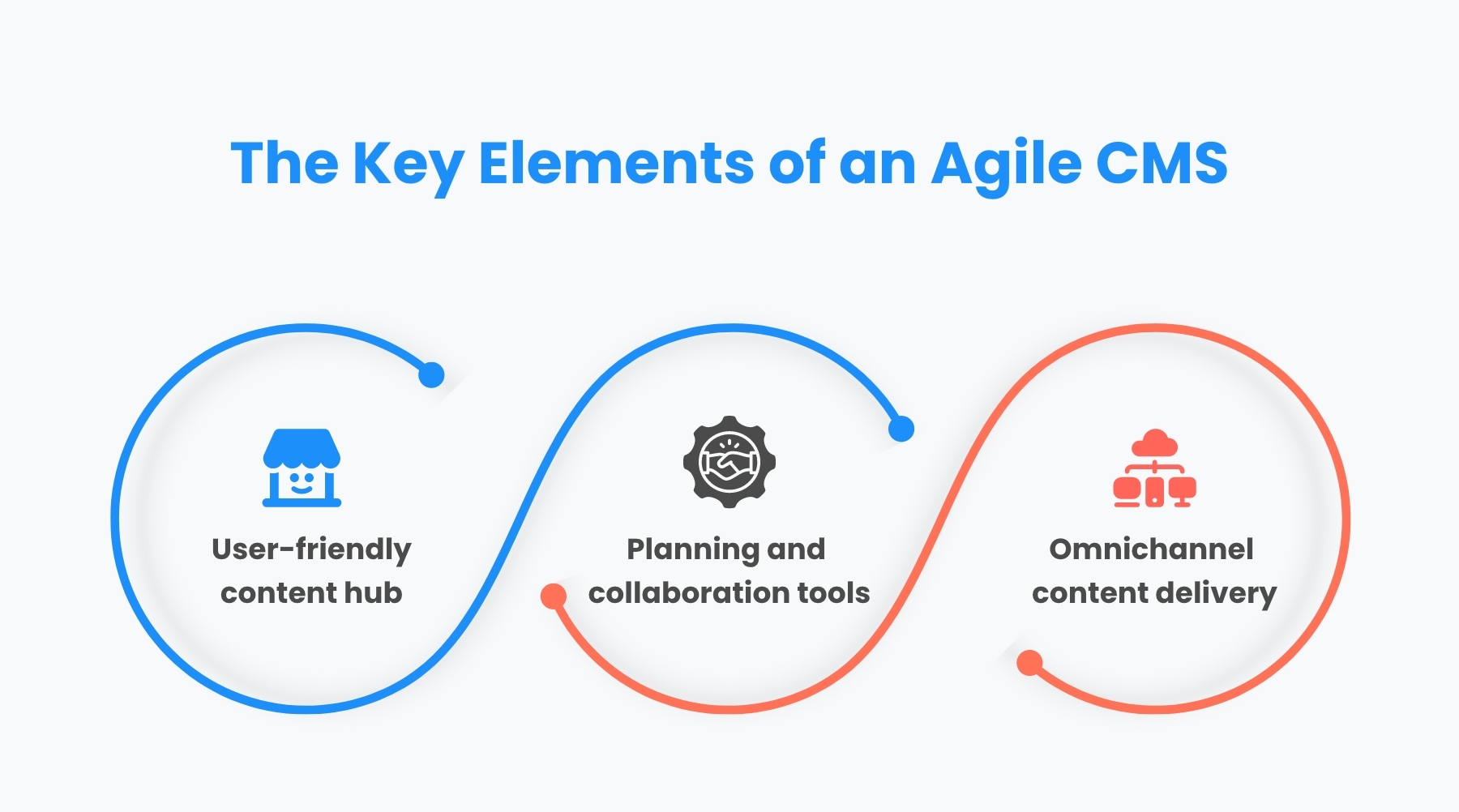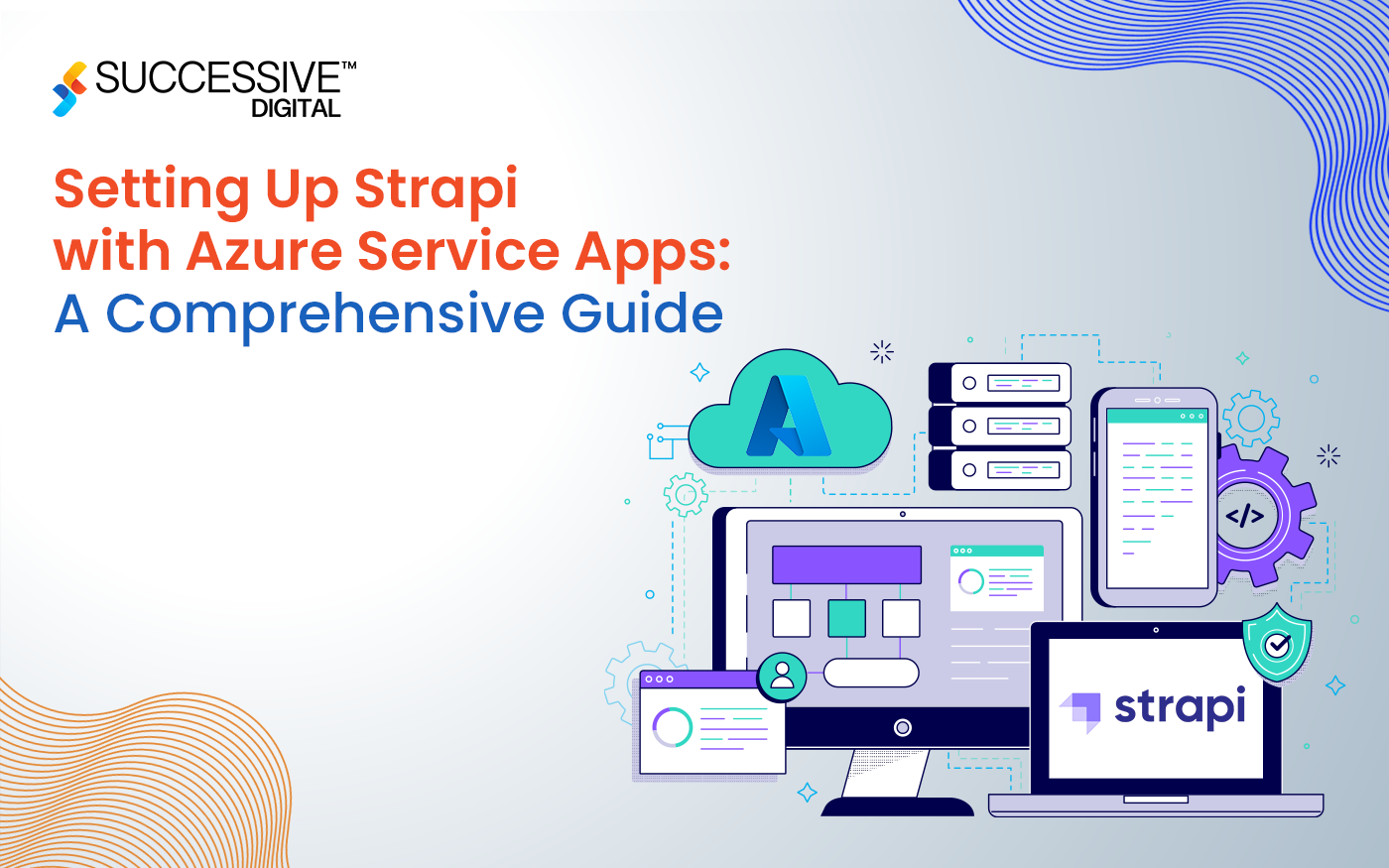Enterprises today no longer have the option to spend months making changes to their websites. They are faced with near constant pressure to offer increasingly better and more seamless omnichannel experiences to customers.
Often, the means to do so might reside within the organization — but they’re not able to leverage them and realize their ambitions due to silos between content teams, systems and data. For large enterprises with data siloed across many disparate systems without a central hub for effective oversight, the costs of this can be massive.
One of the ways to break those silos and unlock higher return on investment (ROI) from content efforts is with an agile content management system (CMS).
The problem with legacy CMSs
Traditional or legacy CMSs are built to simplify content management for a single channel. These are great tools for marketers if the goal is to build a website or maintain a blog. They allow marketers to effectively manage content for their web property without the need for any developer intervention.
However, if marketers try to use these legacy CMSs to deliver content across multiple channels, their limited collaboration capabilities can result in bottlenecks. Traditional CMSs don’t allow marketers to easily reuse content from one channel in another. This creates content silos, increases complexity for marketers, and results in poor customer experience.
Enabling this kind of collaboration for a website built on a legacy CMS would require considerable customization. This also stagnates marketers’ efforts to plan and deliver personalized content.
Additionally, legacy CMSs don’t integrate well with third-party tools. Adding the functionality provided by such tools would also require extensive customization effort.

What is an agile CMS?
Modern digital experience platforms (DXPs) that are replacing legacy CMSs are equipped with the right tools and functionality to create the seamless experiences that modern marketing practitioners need to deliver. But even these can become too complex and restrictive, making it difficult for marketers to get the business outcomes they’re looking for.
Increasingly, success depends on being quick to respond to the market. To achieve this, marketers at enterprises need agility and unprecedented content flexibility. Agile CMSs are a response to that need.
Agile is not a category of CMS, like headless. It’s a kind of modern headless CMS. Headless CMSs separate the frontend presentation layer from the backend content database. By using an API to connect the two, headless CMSs make it easy to deliver content on any frontend channel, simplifying omnichannel content delivery.
Agile CMSs go a step further than headless CMSs to bring in better collaboration capabilities.
This type of CMS is based on the agile development framework, and it is ideally suited to content creators who work as part of agile marketing teams. The notable thing about the agile approach to software development is that it isn’t static. It evolves to respond effectively to uncertain market conditions and changing requirements. Essentially, an agile approach is one that is flexible and responsive to real-time performance and feedback.
An agile CMS brings these advantages to content management. It gives content creators easy-to-use content editing tools and improved planning and collaboration capabilities. It allows them to rapidly publish content, see how it performs, and quickly iterate in response to feedback. Overall, this gives them the ability to deliver better, more personalized customer experiences.
What does a CMS need to be considered an agile CMS?
Conducted by Forrester Research, the Forrester Wave assesses and categorizes vendors in the market. According to the The Forrester Wave™: Agile Content Management Systems (CMSes), Q1 2021, agile CMSs incorporate the following key features:

1. A content hub that’s designed with users in mind
Instead of being more developer-friendly like legacy CMSs, agile CMSs prioritize the needs of marketing practitioners such as content writers and campaign managers. These CMSs provide marketing practitioners with a secure and easy-to-use content management solution. With intuitive tools at hand, marketing practitioners can work faster at orchestrating cross-channel content delivery.
2. Built-in tools for project planning and collaboration
Agile CMSs support best practices for content editing and publishing, custom workflows, and a wide range of content formats. They enable fluid communication with clear feedback loops and effective collaboration with stakeholders.
3. Multichannel support with content reusability
By using API connections, agile CMSs enable easy content delivery across multiple frontends such as different devices and channels. They also take a content-first approach, where content assets can be reused across channels. By organizing content into modular or nestable components, blocks of content can be easily reordered and deployed across channels.
What are the benefits of an agile CMS?
These key features mean that implementing an agile CMS can be a game-changer for marketing practitioners. These are some of the benefits of an agile CMS:
Shorter time to market
Providing a better user experience to content creators helps to increase content publishing speed and efficiency. Granular and customizable workflows eliminate inefficiencies and make it easy for marketing practitioners to collaborate — without requiring them to learn any coding skills.

Greater agility and flexibility
Agile CMSs enable rapid iteration. Content managers can see what’s performing well and what needs to change, and quickly respond to market demands. Content reusability also allows marketers to quickly create the complex and memorable experiences customers desire.
Improved personalization capabilities
Breaking content and data silos across the organizations improves personalization capabilities and customer experience. Marketers can integrate their agile CMS with third-party analytics tools and use customer experience metrics to identify which content should be shown to which groups of customers. The component-based content structure also supports granular personalization needs.
Easy cross-channel content orchestration
Today’s businesses need to deliver content across mobile devices, tablets, smartwatches, and other IoT devices. With content efforts centralized through an agile CMS and the ability to connect to different frontends through APIs, content creators can achieve true omnichannel content delivery at scale.
Ability to adapt and integrate with a variety of tools
With the help of APIs, agile CMSs free marketers from vendor lock-in. These CMSs can plug into any technology stack. This makes it easy for marketers to add new capabilities as needed and respond to market demands using the tools and solutions that are the best fit for that scenario.
Read about the Top 5 Content Management Systems (CMS) in ASP.NET
Higher return on investment
Content reuse and repurposing maximizes the value delivered from each content piece. And API integrations eliminate the need for replatforming, making the solution resilient and future-ready.
But, most important of all, agile CMSs allow marketing practitioners to rapidly create and deliver engaging, compelling experiences to their customers and achieve their business objectives. This is where the difference between an agile and a legacy CMS is most starkly visible; agile CMSs can deliver a higher return on investment than legacy CMSs or modern DXPs can.
Agile CMSs are the future of marketing
The customer journey is no longer linear. Marketers today need a great deal more flexibility across channels and formats than legacy or monolithic CMSs can afford them.
By truly empowering marketers and allowing them to deliver the experiences customers expect, agile CMSs can help to future-proof enterprises’ marketing strategy.












